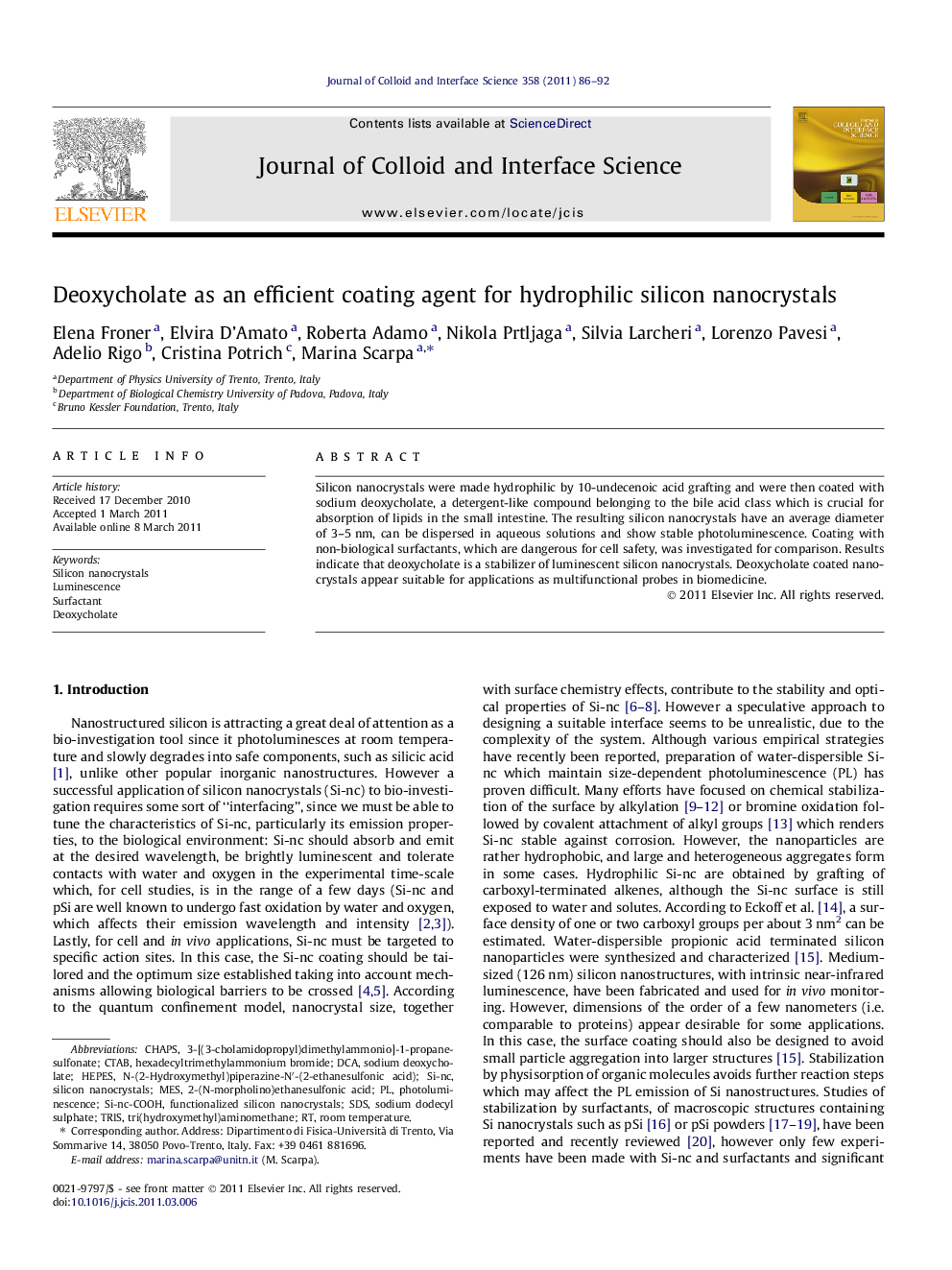| Article ID | Journal | Published Year | Pages | File Type |
|---|---|---|---|---|
| 608633 | Journal of Colloid and Interface Science | 2011 | 7 Pages |
Silicon nanocrystals were made hydrophilic by 10-undecenoic acid grafting and were then coated with sodium deoxycholate, a detergent-like compound belonging to the bile acid class which is crucial for absorption of lipids in the small intestine. The resulting silicon nanocrystals have an average diameter of 3–5 nm, can be dispersed in aqueous solutions and show stable photoluminescence. Coating with non-biological surfactants, which are dangerous for cell safety, was investigated for comparison. Results indicate that deoxycholate is a stabilizer of luminescent silicon nanocrystals. Deoxycholate coated nanocrystals appear suitable for applications as multifunctional probes in biomedicine.
Graphical abstractWater soluble, light emitting silicon nanocrystals were obtained by a two-step procedure: a chemical grafting followed by physical coating by deoxycholate which is natural surfactant-like molecule well tolerated by cells. This compound maintained the bright nanocrystal luminescence emission stable for 4–5 days.Figure optionsDownload full-size imageDownload high-quality image (39 K)Download as PowerPoint slideHighlights► Stable aqueous solutions of luminescent silicon nanocrystals are obtained by a two-step procedure. ► The first step consists in the grafting of alkyl chains on nanocrystal surface. ► The second step consists in the physical coating of nanocrystals by a surfactant. ► Deoxycholic acid is a mild surfactant present in human intestine. ► Deoxycholic acid is well tolerated by cells and living organisms.
